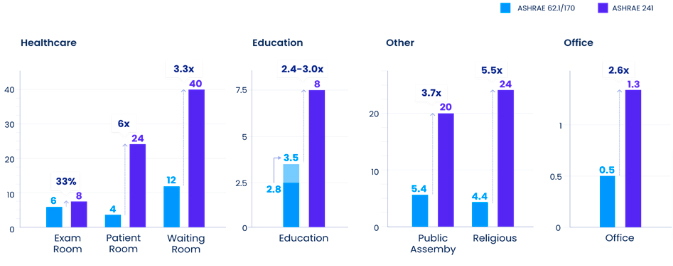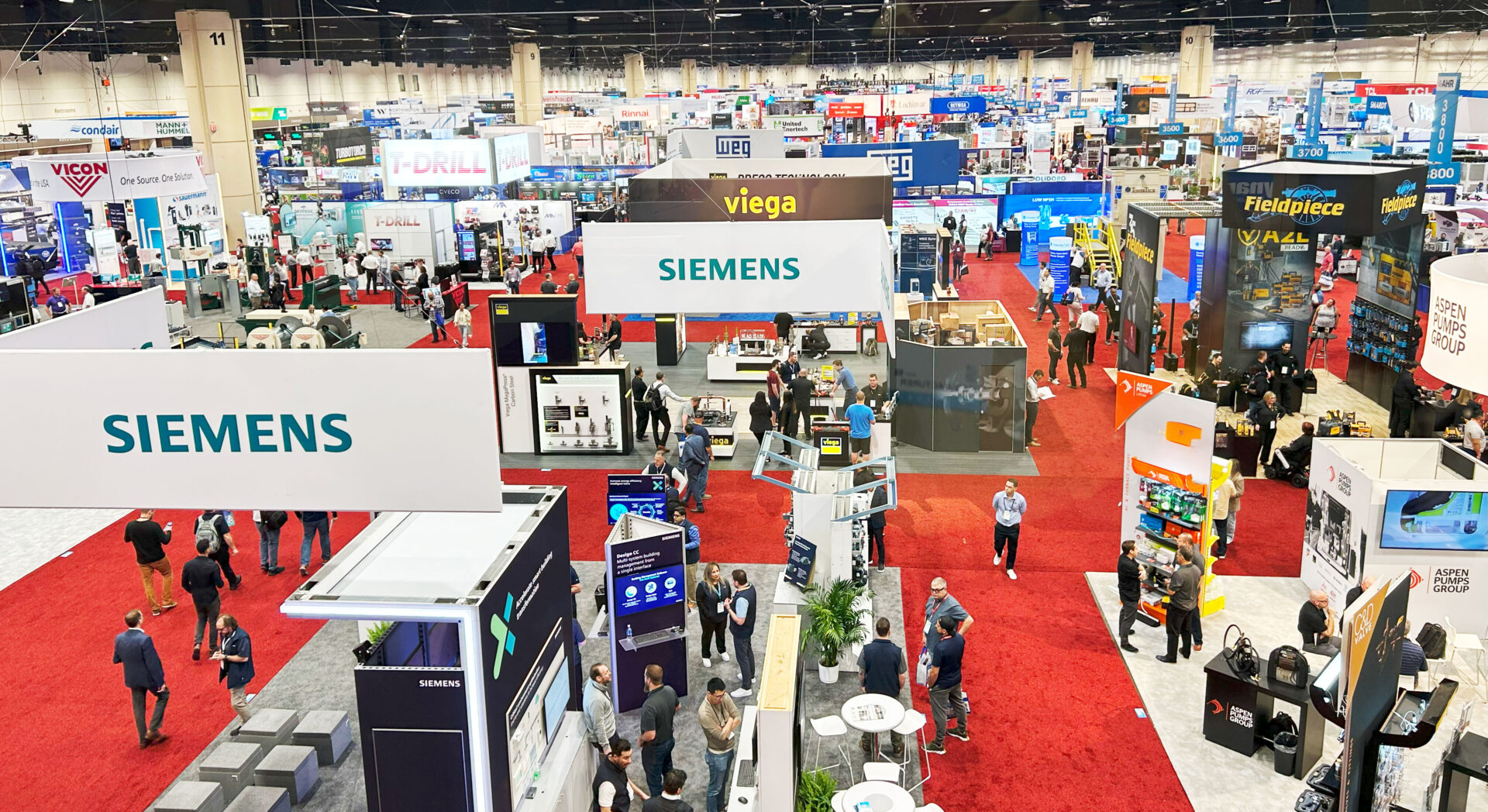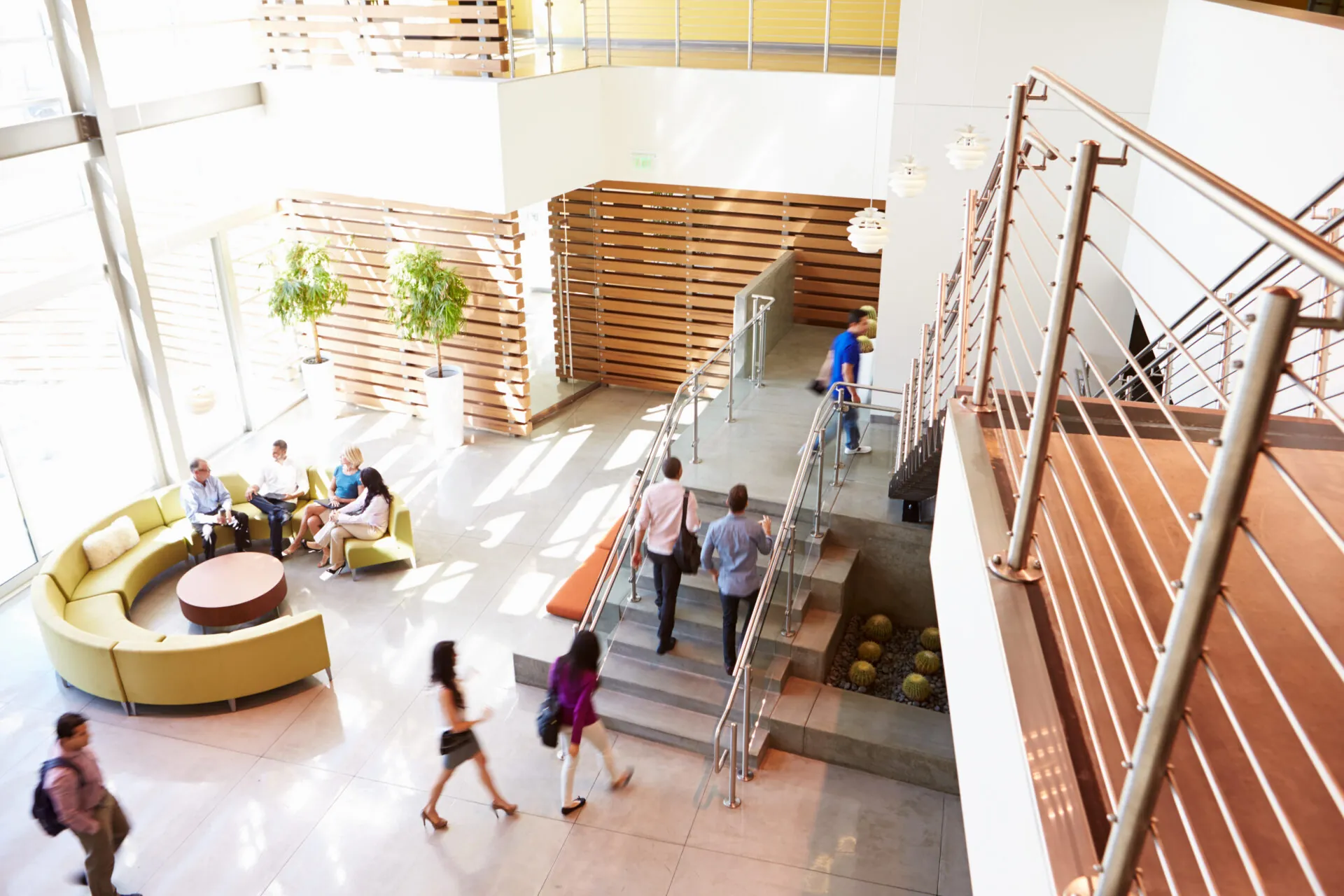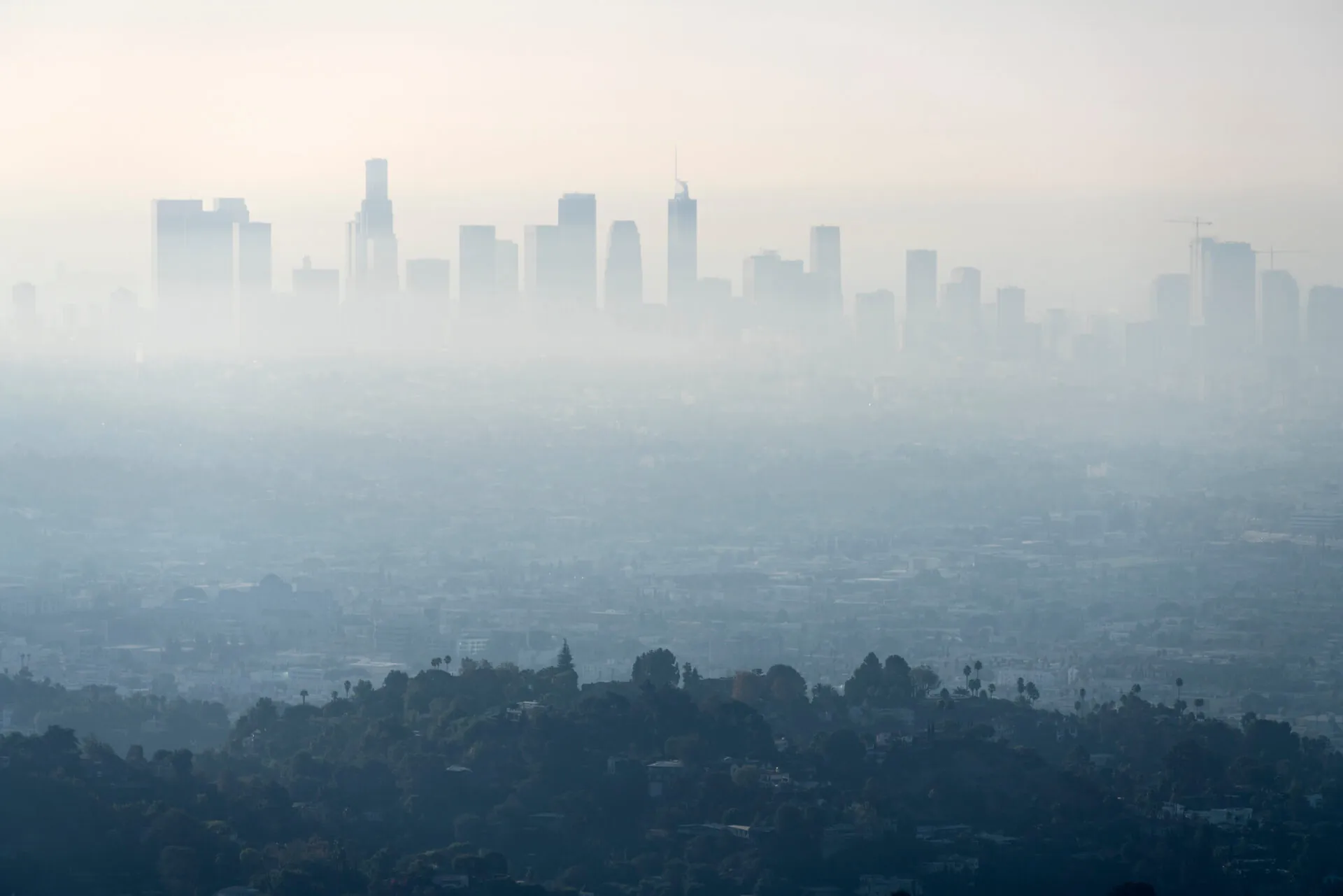
Navigating the Rising Costs of Meeting Building Ventilation and IAQ Standards
Building owners and operators have been faced with a threefold challenge of increasing costs to meet ventilation and indoor air quality standards in recent years.
The three key drivers that contribute to the rising cost are: the increase in required indoor air quality standards, the cost increases in HVAC systems and labor, and the cost of energy itself.
To understand these three drivers, we have to understand why HVAC systems and indoor air quality matter, and why they’re impacting building cost. We’ll break down the sustainability movement and the causes of each of these three factors in greater detail below.
Embracing New Standards
Growing Focus on IAQ
The central driver of increased energy cost is the increasing demand for higher indoor air quality (IAQ). Recent years have seen widespread recognition of the importance of IAQ for building health, and a corresponding demand for greater ventilation and filtration to achieve a healthy IAQ.
One example of this trend is the ASHRAE 241 ventilation standards released last year. ASHRAE, the American Society of Heating, Refrigerating, and Air-Conditioning Engineers, recently released new standards for healthy IAQ in all building categories. These changes require a dramatic increase in equivalent air changes (eACH) per hour, as shown in the graph below.

ASHRAE isn’t the only group to push for greater eACH. The CDC now recommends 5 eACH per hour, and The Lancet recommends 6+ eACH as the best practices for building health. High-performance building standards like LEED, Fitwel, and WELL are also emphasizing the importance of ventilation and IAQ.
ASHRAE 241
Taking a closer look at ASHRAE 241, we can see that the new requirements for increased eACH don’t limit the methodology to ventilation systems. Turning up a building’s ventilation system can only add so many eACH per hour, and 241 recognizes that. Alternate sources of clean airflow, such as filtration of indoor air and air disinfection via germicidal ultraviolet light are also acceptable for building use.
With ASHRAE 241, most building types are doubling or tripling their required eACH. Building owners and operators who meet the previous standard are no longer meeting requirements, and will need to adjust their building operations accordingly to commit to public health and reduce the spread of infectious diseases.
Other High-Performance Building Standards
A closer look at several of the updated standards shows the clear importance of IAQ for high-performing buildings. LEED v5, which was introduced in beta last year, increased points from 4 to 10 for IAQ monitoring. It also tightened the requirement from periodic to real-time continuous monitoring.
LEED v5 also recommended the usage of MERV 13 filters in an HVAC system. The only downside of the MERV 13 filters is that they can increase the energy cost of running the HVAC system if they impede airflow more than the previously used filters.
Similarly, Fitwel 2.1 also incorporated requirements for regular indoor air quality testing into its workplace standard. WELL’s new standard finalized the importance of IAQ by putting IAQ at the forefront of its 2022 Performance Rating.
While all of these standards agree on the importance of a healthy IAQ, it’s not always an easy goal to achieve. The implementation of higher eACH and new filters to achieve the target IAQ will only add to energy expenses and overall building operations.
Understanding The Cost Drivers of the New Standards
HVAC Retrofits Impact of HVAC Costs
The cost of upgrading HVAC systems has increased. The cost of equipment used to keep pace with overall inflation, but that’s changed in the past few years. Overall inflation had moderated since peaking in mid-2022, but HVAC equipment costs have continued to rise, reaching 37% higher than overall producer prices as of November 2023.
Likewise, the labor required to install new equipment has also risen unusually quickly. Costs for commercial plumbing, heating, and air-conditioning contractors have accelerated since 2021, and are now 20% higher than overall labor costs.
The escalating cost of HVAC equipment and labor signifies new costs that building operations and budgets need to take into account. For buildings that rely on gas-powered energy, this can be a challenge due to fluctuations in natural gas prices. Of course, buildings can work to switch from gas-powered energy to electricity-only, but that comes with its own set of challenges.
Electrification Trends
Building owners and operators are having to spend more on energy in order to meet their HVAC update and IAQ compliance goals, but that expense is compounded by the fact that electricity itself is becoming more expensive.
Over the past ten years, electricity prices have risen by about 80%. They have increased in parallel to the increasing overall price levels for producers, which have also risen by about 80%.
In terms of other energy, natural gas prices have generally stayed below inflation thanks to the natural gas boom that began in 2008. However, natural gas prices have become increasingly volatile in recent years. Two years ago, natural gas prices were 40% higher than they have been in the past few months. This volatility makes heating, cooking, and other gas-powered energy uses hard to budget for.
The need to account for volatile natural gas prices is slowly diminishing in the industry, however, as more and more of our built environment relies on electricity as a part of the sustainability movement. Unfortunately, that means that the rising costs of electricity are becoming more important as the percentage of commercial building energy provided by electricity goes up. Electricity made up just under 50% of our energy consumption in the mid-1990s, and it’s been steadily trending upward since then. As of 2018, electricity was roughly 60% of our overall energy consumption.
Rising Energy Prices Propel Building Owners Towards Sustainable Solutions
With the threefold threat of rising energy costs, rising HVAC costs, and rising IAQ standards, building owners and operators have to adapt to the changing landscape of energy and air quality to maintain their building performance.
By practicing sustainable energy management and searching for innovative solutions, it’s possible to mitigate the financial impact of meeting ventilation and IAQ standards. To learn more about innovative solutions like UV-C disinfection to mitigate HVAC costs, check out RZero’s history of energy efficiency.
More posts you might like
-

3 Key Takeaways from AHR Expo 2025: What’s Shaping the Future of HVAC
The 2025 AHR Expo brought together HVAC industry leaders, innovators, and professionals to showcase the latest advancements in heating, ventilation, and air conditioning. Here are the key insights that stood out from our team on the ground. 1. Smart Technology is Enhancing, Not Replacing, Traditional HVAC A significant shift observed at this year’s expo is […]
-

Webinar Recap: Redefining Energy Efficiency
As commercial energy costs continue to rise, building operators are looking for faster, cost-effective solutions to reduce waste and improve efficiency. Heating, Ventilation, and Air Conditioning (HVAC) systems account for nearly 60-70% of total building energy consumption, making them one of the largest opportunities for savings. However, traditional HVAC systems often operate on outdated schedules, […]
-

Wildfire Smoke: Understanding the Impact on Indoor Air Quality
As we face yet another intense wildfire season, with significant events already impacting regions across the country, the challenges to air quality, both outdoors and indoors, are more pressing than ever. Wildfires contribute up to 50% of “ultrafine” particles in the air; tiny pollutants that can travel hundreds of miles and infiltrate indoor spaces, affecting […]

